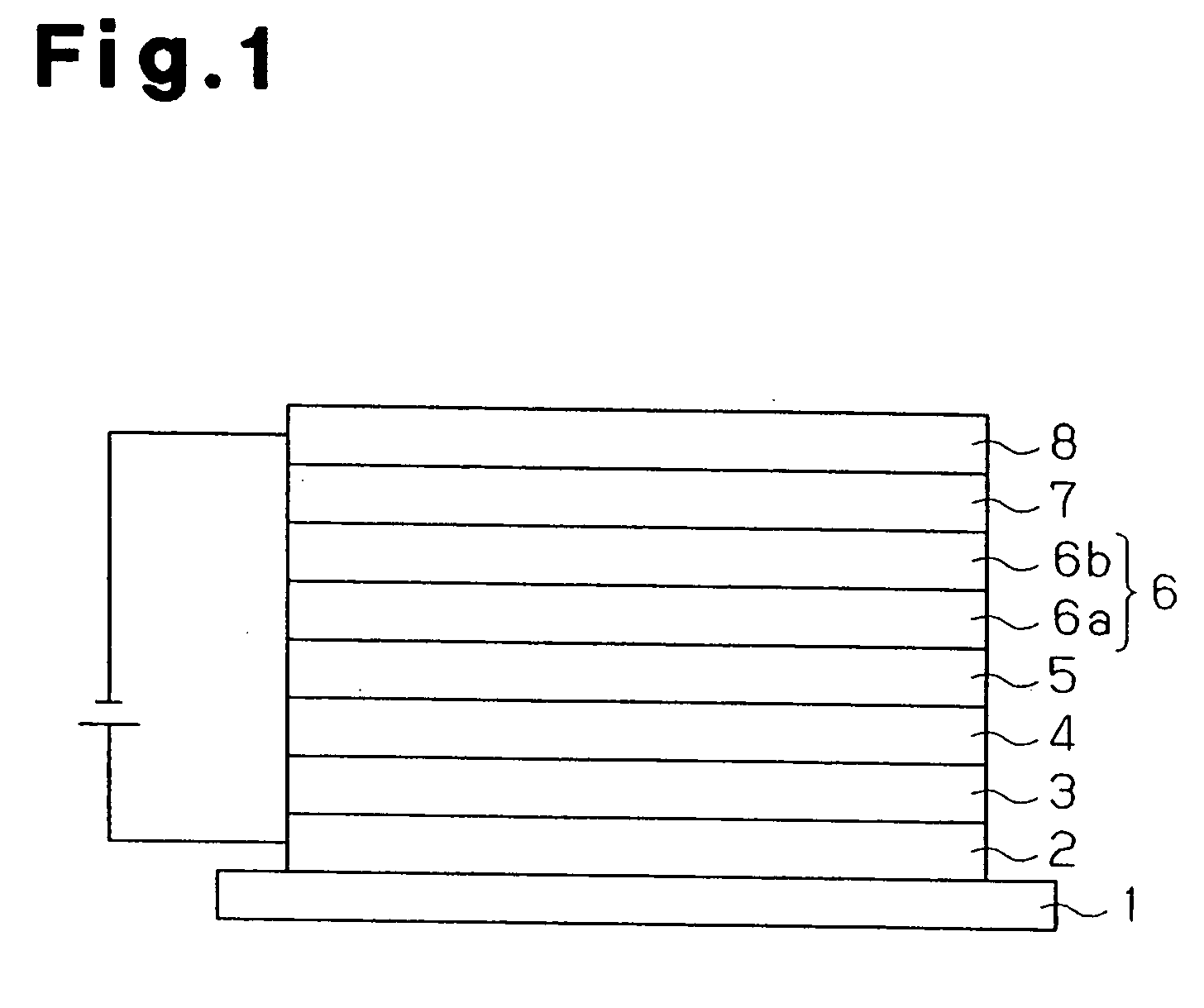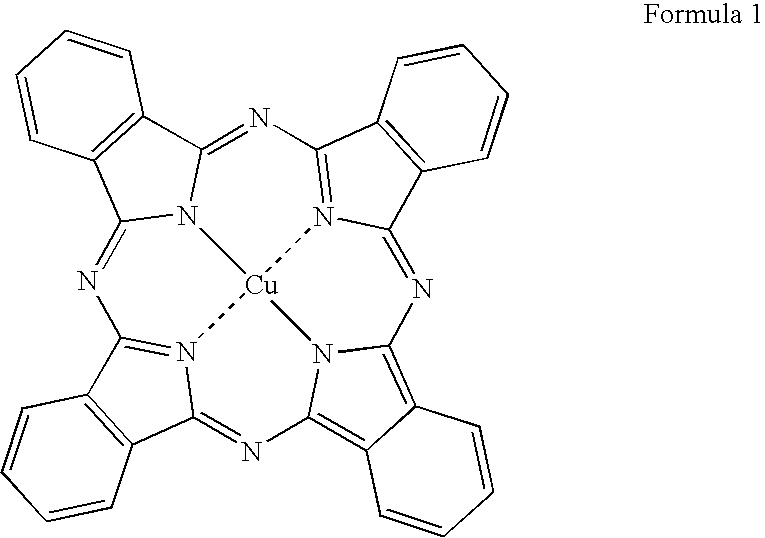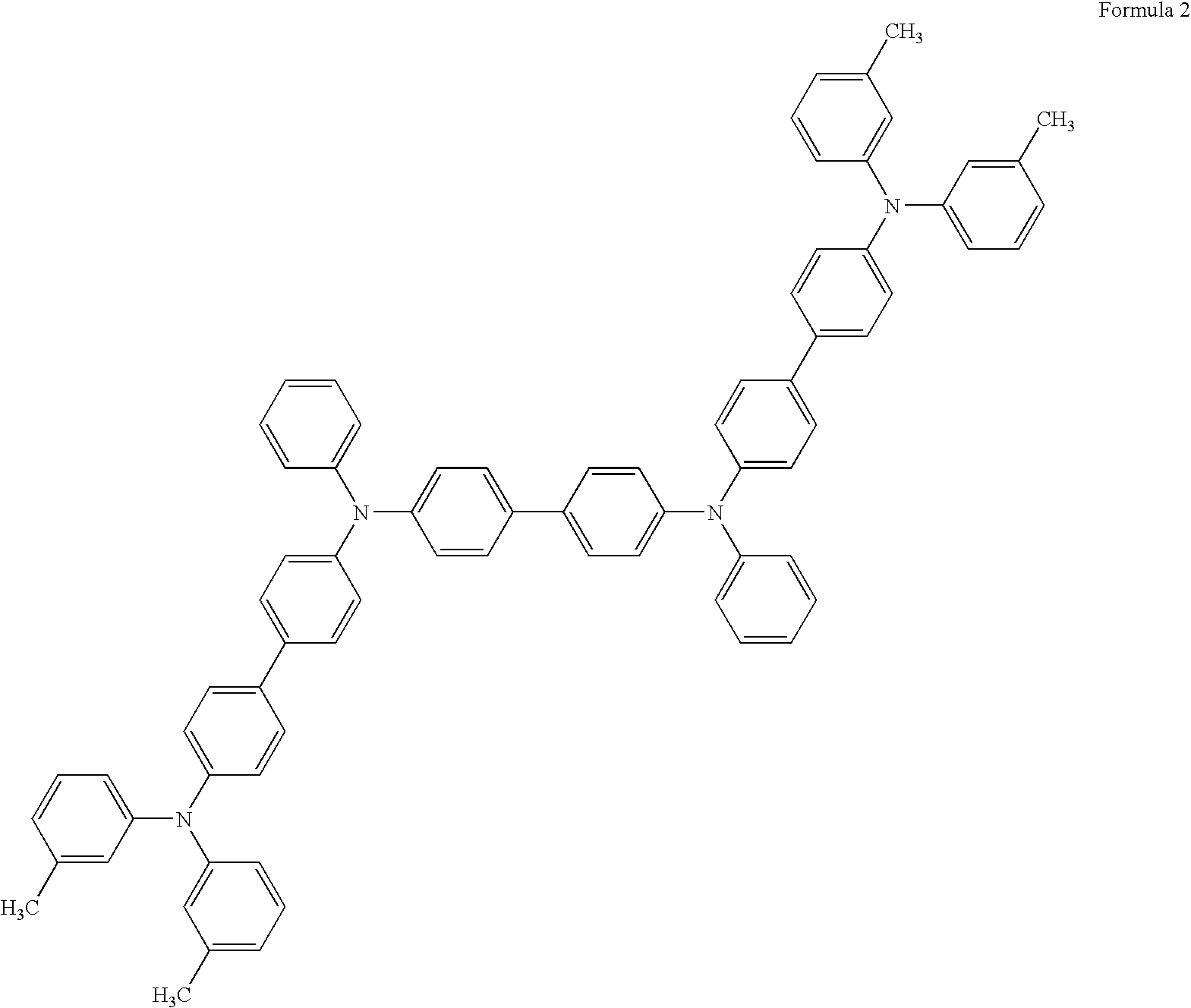Organic electroluminescent device
a technology of electroluminescent devices and organic el, which is applied in the direction of discharge tube luminescnet screens, natural mineral layered products, transportation and packaging, etc., can solve the problems of shortened half-life of the initial luminance of the organic el device, low efficiency, and formation of exciplexes or charge-transfer complexes with adjacent layers, etc., to achieve long initial luminance half-life and high luminous efficiency
- Summary
- Abstract
- Description
- Claims
- Application Information
AI Technical Summary
Benefits of technology
Problems solved by technology
Method used
Image
Examples
example 1
[0037] A transparent glass substrate was used as the substrate 1. An anode 2 was formed on the substrate 1. The anode 2 was formed of ITO having a thickness of 190 nm. For cleaning the substrate before vapor depositing an organic layer, the substrate 1 was subjected to alkali cleaning followed by washing with pure water, dried and then subjected to ultraviolet-ozone cleaning. The substrate 1 was then placed in a vacuum chamber, and CuPc shown in formula 1 was vapor deposited on the ITO provided on the substrate 1 with a carbon crucible at a deposition rate of 0.1 nm / s under a vacuum of about 5.0×10−5 Pa to form a hole injection region 3 of 10 nm in thickness.
[0038] A triphenylamine tetramer shown in formula 2 was vapor deposited on the hole injection region 3 with a carbon crucible at a deposition rate of 0.1 nm / s under a vacuum of about 5.0×10−5 Pa to form a hole transport region 4 of 10 nm in thickness. The triphenylamine tetramer has electron mobility higher than that of CuPc w...
examples 2 to 7
[0049] In Examples 2 to 7, the thickness of the first electron transport layer 6a (Alq3) was each 3.0 nm (Example 2), 2.5 nm (Example 3), 2.0 nm (Example 4), 1.5 nm (Example 5), 1.0 nm (Example 6) and 0.5 nm (Example 7). Devices were prepared in the same manner as in Example 1 except for the above.
examples 8 to 14
[0054] In Examples 8 to 14, a device was produced under the same conditions as in Example 1 except that the second electron transport layer 6b was formed of bathocuproin represented by formula 6, which is a phenanthroline derivative. The thickness of the first electron transport layer 6a was 4.0 nm in Example 8, 3.0 nm in Example 9, 2.5 nm in Example 10, 2.0 nm in Example 11, 1.5 nm in Example 12, 1.0 in Example 13 and 0.5 nm in Example 14.
PUM
| Property | Measurement | Unit |
|---|---|---|
| thickness | aaaaa | aaaaa |
| thickness | aaaaa | aaaaa |
| thickness | aaaaa | aaaaa |
Abstract
Description
Claims
Application Information
 Login to View More
Login to View More - R&D
- Intellectual Property
- Life Sciences
- Materials
- Tech Scout
- Unparalleled Data Quality
- Higher Quality Content
- 60% Fewer Hallucinations
Browse by: Latest US Patents, China's latest patents, Technical Efficacy Thesaurus, Application Domain, Technology Topic, Popular Technical Reports.
© 2025 PatSnap. All rights reserved.Legal|Privacy policy|Modern Slavery Act Transparency Statement|Sitemap|About US| Contact US: help@patsnap.com



